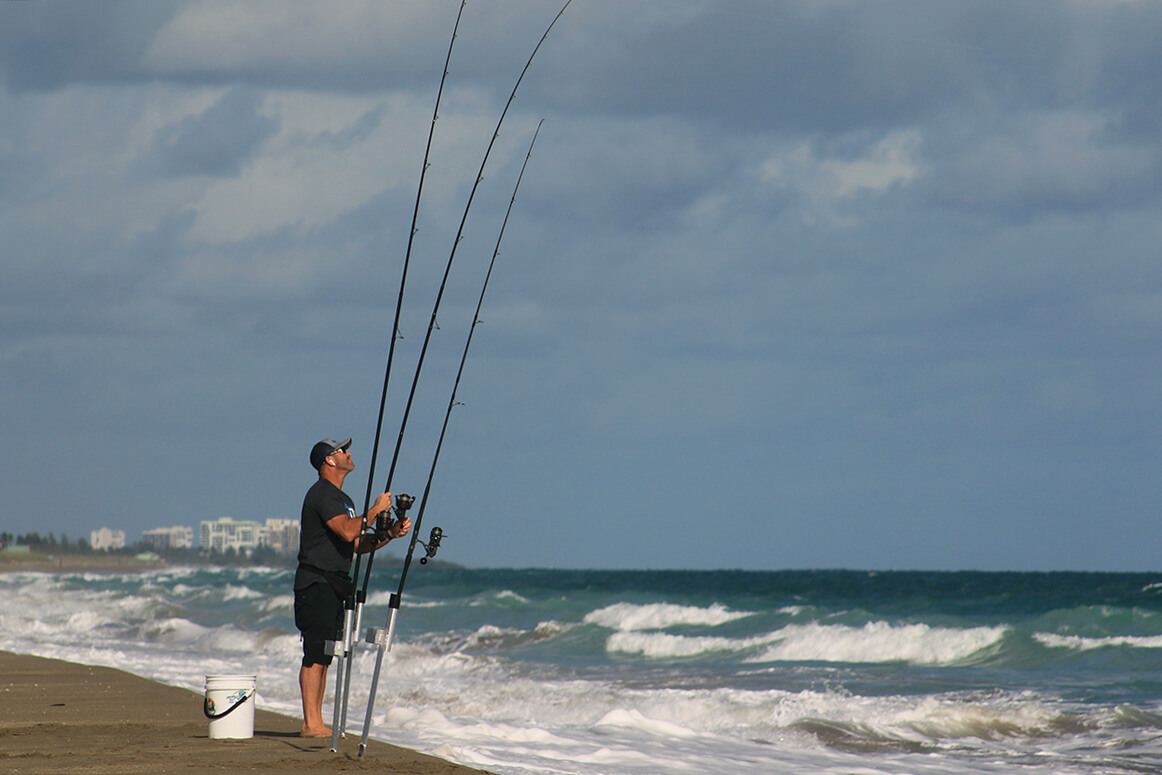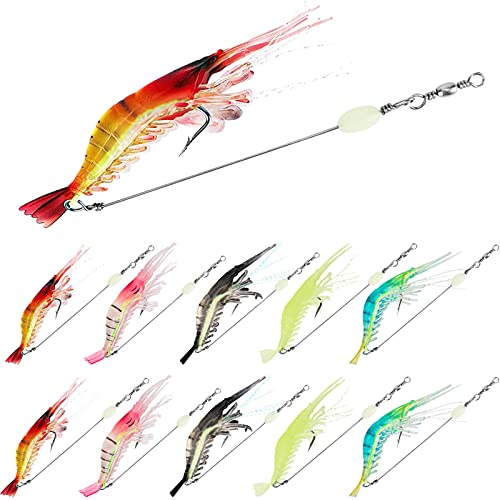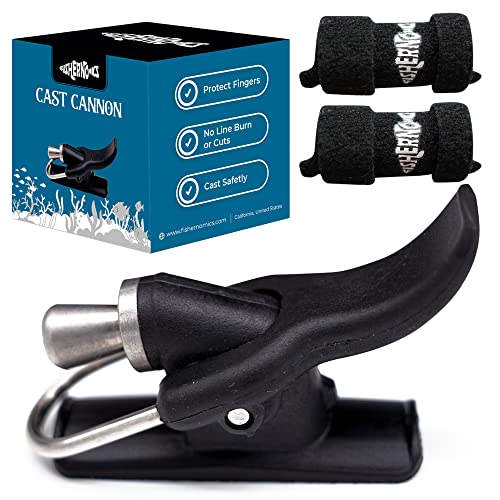The best pound test line for surf fishing is typically between 15-30 pounds. Surf fishing requires a strong and durable line that can withstand the powerful currents and waves of the ocean.
The pound test refers to the amount of weight a fishing line can handle before it breaks. For surf fishing, it is recommended to use a line with a pound test between 15 and 30 pounds. This range provides the necessary strength to handle larger fish species that are commonly found in the surf zone.
Additionally, a higher pound test line can also help to minimize the risk of the line breaking or getting tangled in the surf. Overall, selecting the appropriate pound test line is crucial for a successful and enjoyable surf fishing experience.

Credit: www.floridasportsman.com
Understanding The Basics Of Pound Test Line
When it comes to surf fishing, choosing the right pound test line is crucial. The pound test refers to the amount of pressure it takes for a line to break. Understanding the basics of pound test line will help you make an informed decision and ensure a successful fishing experience.
Let’s dive into the key points to consider when choosing the best pound test line for surf fishing:
What Is Pound Test Line?
- Pound test line is a measurement of the amount of tension a fishing line can handle before it breaks.
- It is denoted by a number, such as 10lb, 20lb, or 30lb, which indicates the maximum weight the line can handle before snapping.
- A higher pound test line can withstand heavier fish and stronger currents, while a lower pound test line is more suitable for smaller fish or less challenging fishing conditions.
Factors To Consider When Choosing A Pound Test Line:
- Target species: Consider the size and strength of the fish you plan to target. Larger and more powerful fish require a higher pound test line to prevent it from breaking under their weight and strength.
- Fishing conditions: Evaluate the fishing conditions, such as the depth of the water, presence of obstacles or structures, and the strength of the currents. These factors can impact the amount of strain the line will experience and determine the appropriate pound test line.
- Line visibility: Some pound test lines are more visible in the water than others. If you are fishing in clear waters or targeting skittish fish, you may want to opt for a pound test line with a lower visibility color or choose a fluorocarbon line that is almost invisible underwater.
- Casting distance: Thicker, higher pound test lines can affect your casting distance. If you need to cast far distances, consider using a lighter pound test line that allows for better line release and increased distance.
- Equipment compatibility: Ensure that the pound test line is suitable for your fishing rod and reel. Different fishing rods and reels have specific weight recommendations, and using the wrong pound test line may result in inefficient performance or equipment damage.
Choosing the best pound test line for surf fishing depends on various factors, including the target species, fishing conditions, line visibility, casting distance, and equipment compatibility. Understanding these basics will help you select the appropriate pound test line that offers the optimal strength, flexibility, and durability for your surf fishing adventures.
Happy fishing!
Expert Recommendations For The Best Pound Test Lines For Surf Fishing
Surf fishing is a thrilling and challenging sport that requires the right equipment to ensure success. One of the most critical components of a surf fishing setup is the pound test line. The pound test line determines the strength and durability of your fishing line, and choosing the right one can make a significant difference in your fishing experience.
In this section, we will explore expert recommendations for the best pound test lines for surf fishing.
Pound Test Line Recommendations For Different Surf Fishing Conditions
When it comes to choosing the right pound test line for surf fishing, various factors need to be considered. Here are some expert recommendations based on different surf fishing conditions:
- Light surf conditions (calm waves, clear water):
- Pound test line: 6-12 lbs
- This range is ideal for light surf fishing conditions, allowing you to cast for small to medium-sized fish. Lighter lines are less visible in clear water, increasing the chances of attracting fish.
- Moderate surf conditions (moderate waves, slightly murky water):
- Pound test line: 12-20 lbs
- In moderate surf conditions, a slightly heavier line is recommended to handle larger fish species. This pound test range provides the necessary strength and durability to tackle more aggressive fish without compromising sensitivity.
- Heavy surf conditions (rough waves, murky water):
- Pound test line: 20+ lbs
- When fishing in heavy surf conditions, where waves are rough and the water is murky, a heavier pound test line is advisable. A line with a pound test of 20 or more can withstand the powerful forces of the waves and ensure you have the strength to reel in larger fish.
Pros And Cons Of Different Pound Test Lines
Every fishing line has its advantages and disadvantages. Here are the pros and cons of different pound test lines:
- Monofilament line:
- Pros:
- Good overall strength and flexibility
- Cost-effective option
- Easy to handle and cast
- Cons:
- Prone to line memory (tendency to retain its coiled shape)
- Susceptible to uv damage and knot slippage
- Fluorocarbon line:
- Pros:
- Excellent invisibility underwater
- High abrasion resistance
- Reduced line stretch for better sensitivity
- Cons:
- Less flexible than monofilament
- Comparatively expensive
- Requires careful knot tying due to its stiffness
- Braided line:
- Pros:
- Exceptional strength-to-diameter ratio
- High visibility above water
- Minimal stretch for enhanced sensitivity
- Cons:
- Not suitable for clear water conditions due to high visibility
- Lack of shock absorption compared to monofilament
- Can be more challenging to handle and cast
Selecting the best pound test line for surf fishing depends on various factors such as surf conditions and the target fish species. Understanding the pros and cons of different pound test lines can help you make an informed decision. Whether you opt for monofilament, fluorocarbon, or braided line, finding the right balance of strength, sensitivity, and cost-effectiveness is crucial for a successful surf fishing outing.
Tips For Selecting And Using Pound Test Line For Surf Fishing
So, you’re gearing up for a day of surf fishing and wondering what pound test line is best for the job. Look no further! In this section, we’ll explore some valuable tips on how to properly select and spool pound test line on your reel, as well as techniques for maximizing its effectiveness in surf fishing.
How To Properly Select And Spool Pound Test Line On Your Reel:
- Consider the fish species: Different fish species require different pound test lines. Determine the average size and strength of the fish you are targeting to choose the appropriate pound test.
- Check the conditions: Assess the surf and weather conditions before selecting a pound test line. Stronger currents and rougher waves may necessitate a heavier line, while calmer conditions might allow for a lighter pound test.
- Understand the line’s breaking strength: The pound test rating indicates the amount of weight the line can handle before breaking. Make sure you choose a line that can withstand the strength of the fish you’re targeting.
- Spool the line properly: When spooling your reel, ensure that the line is evenly distributed and tightly wound. This will prevent tangling and allow for better casting and retrieval.
Techniques For Maximizing The Effectiveness Of Your Pound Test Line In Surf Fishing:
- Use a shock leader: A shock leader is a heavier, separate section of line attached to the end of your main line. It acts as a buffer against the force of casting and the sudden movements of hooked fish, preventing your main line from breaking.
- Learn proper casting techniques: Practicing your casting technique will not only improve your accuracy but also help minimize the risk of your line snapping during the casting process.
- Check for damage: Regularly inspect your line for signs of wear and tear, such as fraying or weak spots. Replace damaged line promptly to ensure optimum strength and avoid unexpected breaks.
- Avoid heavy drag settings: Setting your drag too tight can put excessive strain on the line, increasing the risk of breakage. Keep your drag properly adjusted to allow some give when a fish takes the bait.
Remember, selecting the right pound test line for surf fishing is crucial for landing that prized catch successfully. By following these tips and using proper techniques, you can increase your chances of success and enjoy a fruitful day on the surf.
Happy fishing!
Conclusion
Choosing the best pound test line for surf fishing is crucial for the success of your fishing expedition. It is important to consider the line’s strength, sensitivity, and visibility based on the target species and fishing conditions. A line with a higher pound test is recommended for larger fish, while a lower pound test may be suitable for smaller or more timid species.
Additionally, a line with good sensitivity will help you detect even the slightest nibbles, improving your chances of getting a catch. Another factor to consider is the line’s visibility, as a clear or low-visibility line can be advantageous when fishing in clear water or targeting easily spooked fish.
Keeping these factors in mind, thorough research, and experimentation will enable you to determine the best pound test line for surf fishing that suits your specific needs and preferences.





